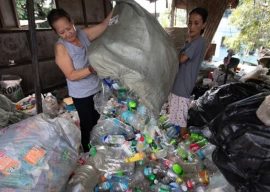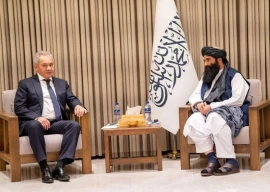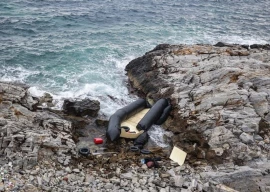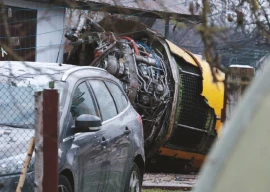
“Eight young Afghans lost their lives as the result of an air strike by coalition forces,” General Lewis Boone, communications director of the International Security Assistance Force (Isaf) coalition, told reporters.
The victims appeared to be carrying weapons and were walking in a menacing manner, prompting Isaf forces in the area to request air support, he said.
“The aircraft dropped two bombs on the group that we believed to be an imminent threat to our people ... in the end, eight young Afghans lost their lives in this very sad event.”
Afghanistan’s Western-backed president Hamid Karzai, whose support is undermined by civilian deaths, has repeatedly urged Nato forces to stop killing villagers.
Afghan government officials this week showed gruesome photographs of eight dead boys from what they said was the Kapisa bombing, and said seven of them had been aged between six and 14, while one had been around 18 years old. They were bombed twice while herding sheep in heavy snow and lighting a fire to keep warm, they said.
The UN said this month the number of civilians killed and wounded in the Afghan war rose for the fifth year in a row, to 3,021 in 2011 from 2,790 in 2010. Most of those deaths were caused by insurgents, it said, but civilian deaths due to Nato air strikes also rose 9% to 187.
Isaf said earlier this week that it will hold a conference in March, in conjunction with the Afghan government and the UN mission in the country, to discuss how to stop civilians being killed.
“The Afghan government has spoken enough with the Americans and Nato allies behind closed doors about how to prevent civilian casualties,” Karzai’s chief spokesman Aimal Faizi told Reuters. “It’s time to take action to prevent civilian casualties. Holding conferences is not going to help.”

















COMMENTS
Comments are moderated and generally will be posted if they are on-topic and not abusive.
For more information, please see our Comments FAQ